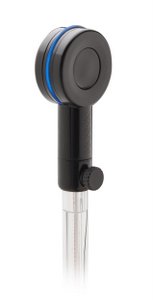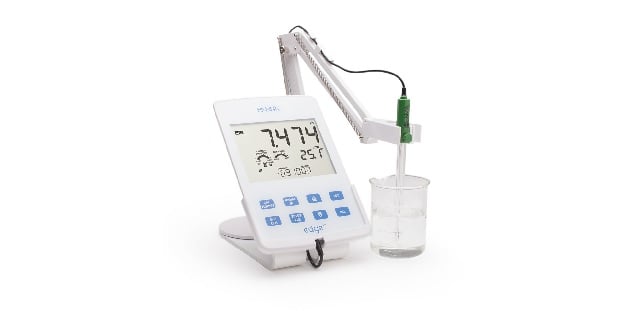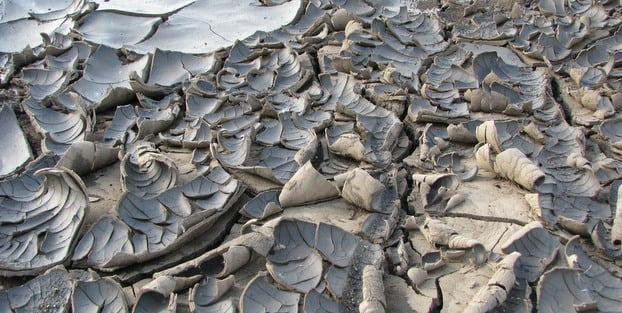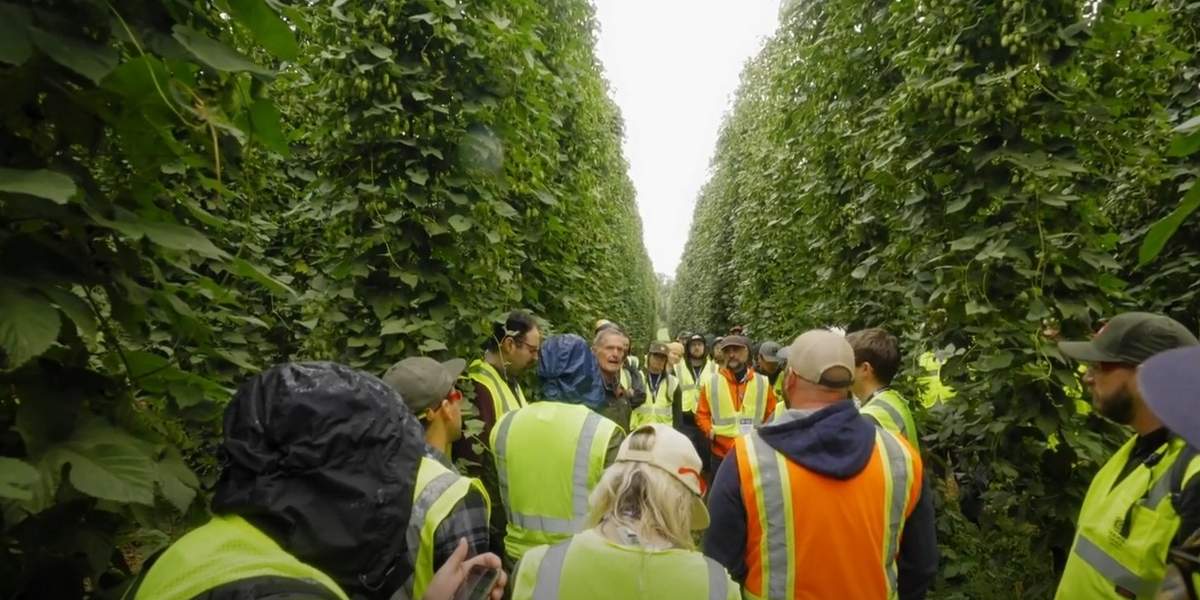As brewers, we measure out our ingredients, time our boils and add hops at precisely the right time in order to ensure a successful, quality finished beer. However, we often overlook the importance of the most abundant ingredient in beer — water! If the water used tastes good, we generally assume the beer will also taste good. While this may be true sometimes, the composition of your water may substantially change the taste of your final beer, for better or for worse. As we gain more brewing experience, we learn that water chemistry plays an integral role in our final brew. After deciding the style of beer to brew, we can determine if our water is going to give us the desired product. The source of water that is used in brewing can vary: It may come from a private well; the municipal distribution system; or it can be purified or bottled water. No matter what source of water we are starting with, parameters such as pH, hardness and alkalinity can cause great variations in the final brew. Values of these parameters can be established by either looking at our local water report or by performing a measurement. Using these values, we can make the necessary adjustments to produce more consistent brews.

By measuring the pH of a solution, we can determine whether the solution is acidic (pH less than 7), basic (pH greater than 7) or neutral (pH 7). Municipal water is distributed in a pH range of 6.5 to 8.5 according to the guidelines set by the Environmental Protection Agency. When water leaves the drinking plant, the pH is close to neutral. However, as water travels through pipes the pH can change, becoming more acidic or basic depending on the types of ions that are encountered within the distribution system.
What if you have your own personal well as a water source? Well, water from a home is recommended to fall within the same pH range as municipal water, but it is not government regulated, making it an important parameter to measure. During the mash, it is important to monitor pH, as it dictates when certain enzymes are active, ensuring all starches are converted to sugars. The ideal pH during mash is 5.2 to 5.6. To achieve this, compounds such as phosphoric acid, lactic acid and gypsum can be added to adjust the pH within the proper range.
Litmus paper and pH test strips are a quick and easy way to check your pH. These strips are first dipped into the water, wort or beer; a color change is then observed and compared to a key. Test kits can also be used to check pH levels; this method involves adding a reagent to the sample and looking for a color change. While these color changes are easy to see in water, they become more difficult to detect in colored or turbid solutions such as wort. For highest accuracy, a pH meter and electrode are recommended. pH meters are available in many different forms, from inexpensive pocket meters to portable and benchtop instrumentation. Most pH meters will automatically correct for temperature effects on the pH reading. This allows them to be used throughout the entire brewing process ensuring accurate readings and helping to get the desired beer as a result.
When attempting to brew a specific beer style, hardness and alkalinity both play important roles. Water hardness is caused by the presence of metallic, positively charged ions in water, namely calcium and magnesium. Water with high concentrations of these ions is considered hard, while water with low concentrations of these ions is considered soft. Hard water may occur naturally based on the location and geology of the source water. Pilsen, Czech Republic, for example, is an area with historically soft water that is responsible for providing the soft hop flavor of traditional pilsners. Water hardness can be increased or decreased accordingly before using the water for brewing. Testing hardness can be performed by several different methods that vary in complexity as well as accuracy.
Want to know the impact of temperature and pH on enzymes? Click here to read the story.
Like pH, test strips can be used as a quick way to measure hardness. The test strip will change color based on the level of water hardness, and the color can then be compared to a standard that is provided with the strips. Although simple, test strips are limited in accuracy and resolution. Manual titration test kits can be used to provide a bit more accuracy. Reagents are added dropwise to a water sample until a color change occurs, indicating the titration endpoint. The number of drops needed to cause the color change is then multiplied by a factor in order to determine concentration. Another option to determine water hardness is colorimetry: A water sample is read in the colorimeter as a reference point or a blank. Reagents are then added to the sample, causing a color change. The intensity of this color change is quantified by shining a light through the sample and measuring the absorbance, which is proportional to concentration.
Alkalinity refers to the buffering capacity of water. Alkalinity is primarily caused by the presence of bicarbonates and carbonates in water. An alkalinity measurement expresses water’s ability to neutralize acids. Water with high alkalinity will maintain a stable pH during the boil as the organic acids extracted are neutralized, possibly causing the flavors to be suppressed. Water with low alkalinity may undergo large swings in pH, namely due to acids from the grains; this can potentially give beer a wine-like characteristic. The alkalinity can be altered to the desired levels by the addition of chalk, baking soda or gypsum to raise the alkalinity or addition of an acid to reduce the alkalinity. Depending on the anticipated brew, higher or lower alkalinity may be desired. For example, in Munich lagers, dark malts are used to acidify and balance the carbonate rich high alkalinity source water. Alkalinity can be measured by various methods including manual titration test kits to a color change endpoint, colorimeters and titration to a pH endpoint using a pH electrode and meter.
By regularly monitoring the characteristics of source water, brewers will realize the significant effect that parameters such as pH, hardness and alkalinity can have on the final brew. Regardless of the way in which these parameters are measured, having a comprehensive baseline can help us understand ways in which the water can be adjusted to give consistent, optimal finished beer.
This article was provided by Hanna Instruments. For more information, please visit the Hanna Instruments website.





RT @GravityBrewlab: H2O makes a difference! Find out how water affects your #craftbeer! http://t.co/pm2AoWMGJG @craftbrewingbiz
H2O makes a difference! Find out how water affects your #craftbeer! http://t.co/pm2AoWMGJG @craftbrewingbiz
A great article for our #craftbrewing customers who brew their own beer…. http://t.co/ZVlpyEAcLQ
The effects water can have on your brew http://t.co/IAvJokb8LQ
The effects water can have on your brew http://t.co/QCOAtVnBMl
Can your brew be effected by #waterquality? http://t.co/V2L50GCzQc #hannainst #beer http://t.co/YrAJnCLnHt
RT @belgianbeerday “The effects water can have on your brew ” http://t.co/CLzd2VdW7L
The effects water can have on your brew http://t.co/IGCpYYMs3M
RT @mrbrewreview: The effects water can have on your brew http://t.co/Bww9wFuE9o via @craftbrewingbiz
The effects water can have on your brew http://t.co/Bww9wFuE9o via @craftbrewingbiz
RT @CraftBrewingBiz: The effects water can have on your brew. The folks at @hannausa know water chemistry. http://t.co/WKeL06zuVE
The effects water can have on your brew http://t.co/y4JpZbzdBQ via @craftbrewingbiz
RT @CrowdBrewed: The effects water can have on your brew http://t.co/EssVZsWLiD via @craftbrewingbiz #water #quality #beer #craftbeer http:…
RT @CrowdBrewed: The effects water can have on your brew http://t.co/EssVZsWLiD via @craftbrewingbiz #water #quality #beer #craftbeer http:…
RT @CrowdBrewed: The effects water can have on your brew http://t.co/EssVZsWLiD via @craftbrewingbiz #water #quality #beer #craftbeer http:…
The effects water can have on your brew http://t.co/EssVZsWLiD via @craftbrewingbiz #water #quality #beer #craftbeer http://t.co/oHG32MD4I9
Kyle Hartshorn liked this on Facebook.
Gustavo Stentzler Garcia de Lima liked this on Facebook.
Jerry Elliott liked this on Facebook.
Dimitris Jim Tsikountouras liked this on Facebook.
Rob Converse liked this on Facebook.
The effects water can have on your brew http://t.co/zSzI0uEnHb via @craftbrewingbiz